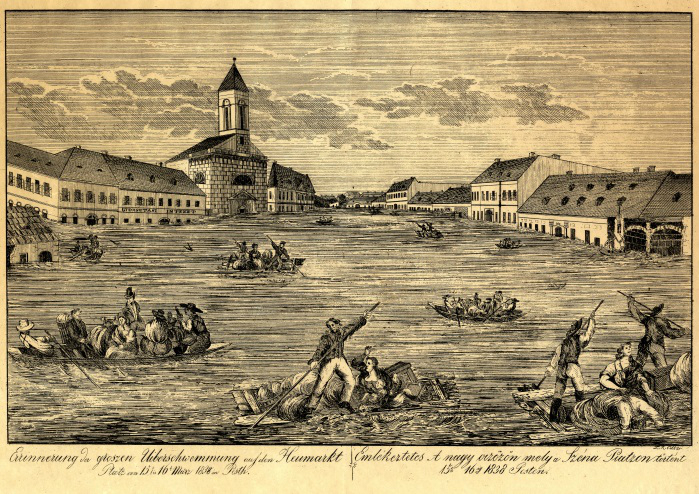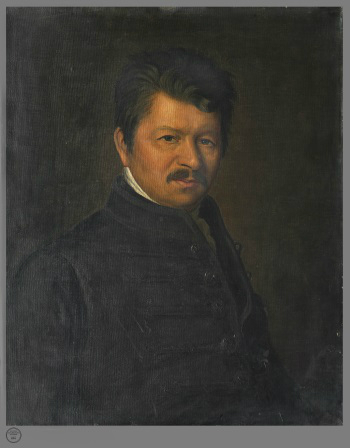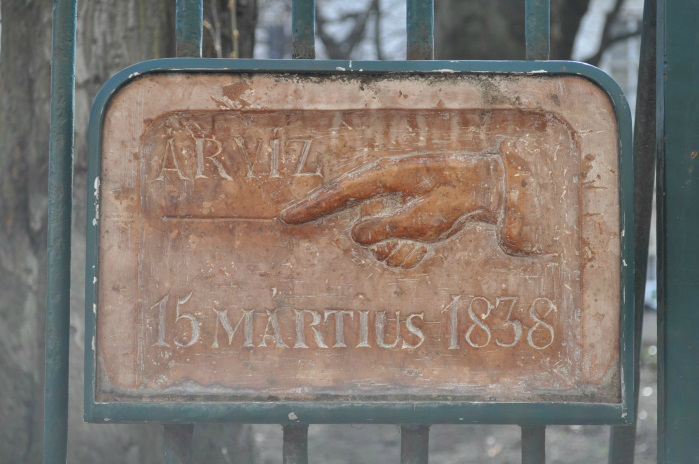The Hungarian National Museum In The Flood Of 1838
HISTORY
At a time like this it is worthwhile to recollect what was the most devastating flood of the Danube and what were its consequences.
| Debreczeni-Droppán Béla |
2013-06-10 20:29 |
So far the highest water level in Budapest was recorded in 1838. At the time the flood reached 9.3 meters and caused the greatest damage in the history of the Hungarian capital. It is not well-known to the public how it affected the National Museum, its building and its collections, so let’s get closer to the history books of 1838.
 |
| The Hay market - today Kálvin square - in 1838 flood |
The winter of 1837-38 proved to be one of the hardest in several decades. The Danube froze to its bottom in several regions, even at the edge of Csepel Island. The ice became as hard as a wall made of concrete and did not let the flow of the river go further down.
Dam made of sand and dung
On march 13th the waterlevel reached its highest ever. At 9 p.m. the strength and power of the flood broke through the dam along Vörösmarty tér and covered the town of Pest almost immediately. The bells began to toll and the people started to flee – though this only meant they tried to climb ont he roofs of their houses. In many section of Pest the inhabitants couldn’t even start rescuing their animals, the water was so rapidly getting higher and higher.
The flood reaches the museum
 |
|
Historian István Horvát (1784-1846)
director of the National Museum
|
The director of the National Museum István Horvát became the leader of the rescue team the very next morning. The flood easily reached the walls of the museum and there was nothing to be done but taking care of the collections. The small house of the head of antiquities collection collapsed in half an hour. Soon the homes of the other museum workers became the prey of the icy water. E In this tragic situation Horvát ordered the 11 soldiers, originally guarding the museum entrances, to help him take the pieces of the Illésházy Collection to the next storey of the museum. József Stadler, leader of the natural history collection also had to take his material up to the next level.
At 11 p.m. royal commissioner János Lónyai arrived at the museum and registered that everything that was needed to save the treasures of the nation’s museum was done and done very thoroughly. The last action that had to be done was the opening of the library of the collection of antiquities. When all the volumes were safely moved the commissioner left the building of the museum.
The damages
The flood fortunately started to ebb away on the 16th of March and Horvát could begin to assess the damages. Thanks to the director’s quick and responsible actions the institution had only very slight damages: a few volumes and a cupboard were soaked through, otherwise the museum and its collections were unharmed.
 |
|
Flood memorial plaque in the fence of the museum
|
The consequences of the flood
The damages caused by the flood in Pest were devastating: 2281 houses collapsed, 151 people died, the damages in the movables could not even be assessed. Most of Pest was demolished, even the buildings ont he lot of the museum were gone.
 |
|
Buildings destroyed by the flood
(indicated with black ink) in
a map from 1838
|
The construction of the museum started a few days after the flood. Of course during the first couple of days the rubbles had to be taken away. The collections of the National Museum were moved to the building of the Ludoviceum barracks. The National Museum became the symbol of the rebirth of Pest. The people came day by day to admire how the museum building was built and this made everybody believe that the whole town can be reconstructed. Even Palatine Joseph wrote an article in a journal titled „Pest will be more beautiful than ever”. And he was right in his belief.